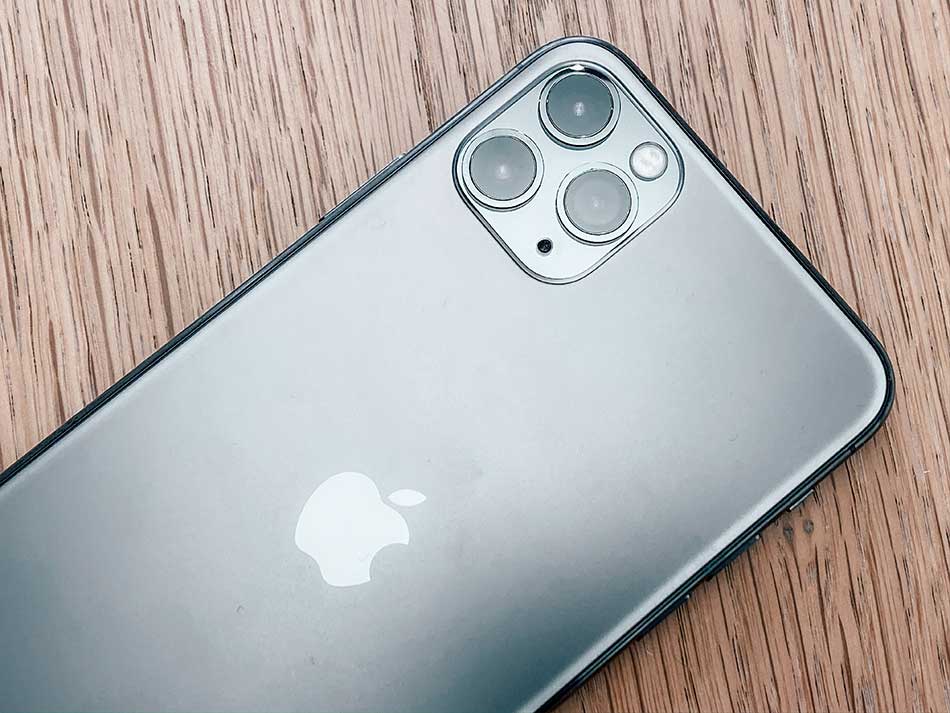Although the preview for the new iPhone 11 did not impress a lot of people, loyal Apple fans still flocked to the nearest stores upon its release.
The phone debuted this week and replaced the iPhone XR as the latest model. At a significantly lower price of $699, fans were excited about what the new model has to offer. However, users soon discovered that the new Apple iPhone may be more camera than smartphone.
In Apple’s preview, they spent a significant amount of time focusing on the new phone’s camera capabilities than the other features. This goes to show that Apple is focusing on camera technology to set itself apart from its biggest competitors, Samsung and Huawei. In recent years, these competitors have equaled or even dominated Apple when it comes to smartphone camera quality.
In a 100-minute press conference at the Steve Jobs Theater in Cupertino, California, Apple CEO Tim Cook spent 13 minutes talking about the new phone’s camera. He spoke more about the smartphone’s camera features than the launching of Apple Arcade, Apple TV+, and the latest model of the iPad.
“Apple is embracing what we can refer to as the camera plateaus, positioning them as the iPhone’s distinguishing feature,” independent Apple analyst Neil Cybart wrote in the newsletter for Above Avalon.
An analyst from Gartner, Annette Zimmerman, also added: smartphones’ cameras are “what consumers still care about most and where most expect innovation to happen. It is a bit of an easy benchmark for users, as it is easy to observe.”
According to Cook, a group of 800 people is dedicated to the improvement and development of the iPhone camera.
But aside from the new selection of colors, the iPhone 11’s camera seems to be the only significant difference.
New Camera Features
With 800 people tasked to improve the iPhones’ camera, it is expected to wow consumers.
The cheapest model of iPhone 11 has two cameras. One of those cameras serves to take “ultrawide” pictures that can fit more into the frame, which is a significant highlight of the iPhone’s preview. The second camera serves to take regular photos.
Aside from the ultrawide capability of the new iPhone camera, this model has a zoom lens which allows users to take pictures without moving closer.
In the social media age, consumers care more about the phone’s camera above all else. Apple prioritizes the improvement of the iPhone’s camera because, according to them, people want to take a lot of pictures with good quality.
“Consumers upgrade for better cameras – among other reasons,” analyst Julie Ask stated. Among the reasons why people look for upgrades, the display of the phone is also a major factor.
Last year’s iPhone design is essentially the same as this year’s. Because of this, the iPhone 11 has a significantly different physical camera design to set it apart from the previous models.
In a way, this physical feature will become a symbol of social status, as predicted by Cybart.
Apart from being a social signal, the new design of the iPhone camera will help it keep up with Samsung and Huawei. Both have new releases that also contain a multi-camera feature and other camera tech, such as combining pictures and night vision.
Apple also wants to improve its night mode, a feature that is used to brighten pictures that are taken in dim lighting. Google’s smartphone, the Pixel phone, featured the Night Sight, which is their version of night mode.
In addition, Apple highlighted its “Deep Fusion” feature. With this feature, Apple’s AI and machine learning will allow the phone to combine multiple photographs to create one final result, something that a conventional camera cannot do. The new iPhones will not carry this feature, but Apple plans to add it in a software update.
“It shoots nine images. Before you press the shutter button, it’s already shot four short images, four secondary images,” Phil Schiller, a top marketing executive for Apple, said. “When you press the shutter button it takes one long exposure, and then in just one second the neural engine analyzes the fewest combination of long and short images, picking the best among them, selecting all the pixels, and pixel by pixel, going through 24 million pixels to optimize for detail and low noise.”
Zimmerman weighed in, “Apple’s ”‘secret sauce’ is more in the software and how Apple is leveraging AI for photography. They presented the Deep Fusion feature that helps with the small details in a shot all driven by the AI capability of the A13 Bionic.”
“It takes a lot of resources and only a few can do this, so Apple is among the top 5 but were they the first to market with a triple-camera system leveraging AI and high-end hardware? No,” the analyst added. Samsung and Huawei already have triple-camera features available.
Smartphones Replacing Digital Cameras
With the rise of sophisticated camera features in smartphones, standalone cameras have experienced a drop in sales. According to an analysis from the Camera and Imaging Products Association, there were 20 million digital cameras sold last year. Comparing that with a 120 million total ten years ago in 2008, it is predicted that sales will continue to decline.
“Because hundreds of millions of phones are sold every year, it is possible for companies like Apple, Google, Samsung and Huawei to pour billions into researching and improve their phone cameras, not to mention the software and algorithms.” Malik stated in writing. “Thanks to this cocktail of better chips, better processing, better sensor and ever-improving algorithms, the future belongs to computational photography.”















